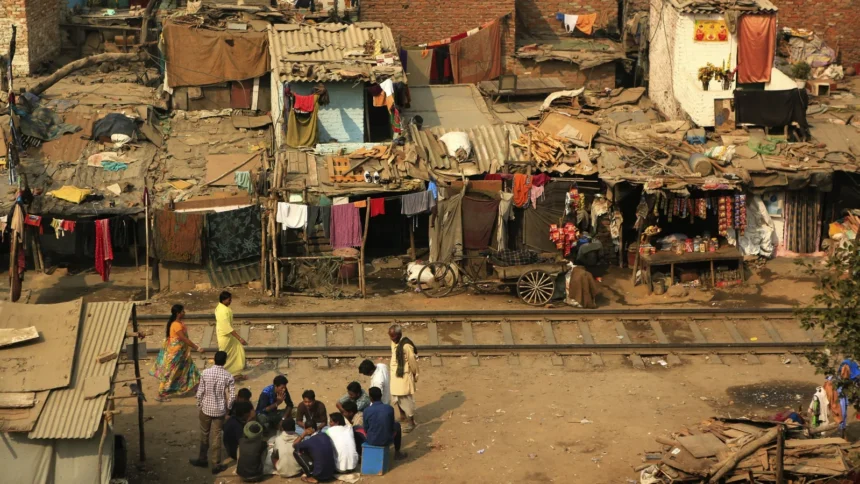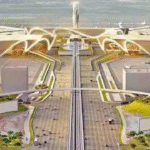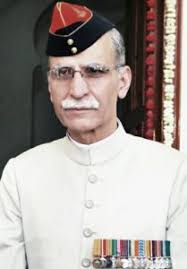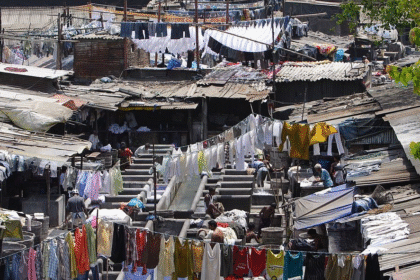The Hoax of Decline in Poverty in India: Why Official Claims Don’t Reflect Ground Reality
Recently, two sets of data have been released, both of which indicate a significant decline in extreme poverty in India.
Rangarajan and S. Mahendra Dev have estimated poverty in India using the all India Consumption Expenditure Survey data from the 2022-23 and 2023-24 surveys. Their concept of poverty was the one recommended by the Rangarajan Committee on Estimating Poverty in India. Their paper shows that extreme poverty in India has declined significantly from 29.5% in 2011-12 to 9.5% in 2022-23 and to 4.9% in 2023-24.
The decline is fairly rapid: 2.05 percentage point decline per year between the year 2011-12 and 2023-24. The World Bank also shows in its recent paper that at the poverty line of USD 2.15 (at 2017 PPP) per day, India’s extreme poverty has declined from 16.2% in 2011-12 to 2.3% in 2022-23. That means about 170 million people have been lifted above the extreme poverty line in India during this period.
The depth of poverty analysis by Rangarajan and Dev’s paper also show that 50% of the poor lie between the 3rd and 4th quarter of the poverty line, both in 2011-12 and 2023-24. This means, most of the poor are concentrated around the poverty line.
As regards the causes of this decline, the paper observes that this is due to rapid economic growth and safety nets, including free food grains to 81.35 crore people.
However, they also observe that economic growth is important in this decline in poverty between 2022-23 (9.5%) and 2023-24 (4.9%) as there is no significant change in the welfare expenditure of the government during this period.
It is too early to call this last decline a trend, with data for only two years.
Concepts of poverty line
The concepts of poverty used by both the sources are different. The Rangarajan Committee has defined the poverty line as simultaneous satisfaction of all three nutrient-norms, namely, a full range of policies and programmes for child nutrition support, public provisioning of a range of public goods and services aimed at the amelioration of the disease environment facing the population.
The committee also preferred NSSO’s estimates and decided not to use the NAS estimates and price relatives derived from the Consumer Price Indices. According to the committee (2014), the poverty line was Rs 972 for rural areas and Rs 1,407 for urban areas. The poverty lines computed as per capita monthly consumption expenditure for 2023-24 are Rs 1,940 for rural areas and Rs 2,736 for urban areas.
This comes to Rs 64.66 per capita per day consumption expenditure for rural areas and Rs. 91.2 for urban areas.
The concept of extreme poverty of the World Bank is defined slightly differently. The World Bank defines extreme poverty as “deprivation in wellbeing”. The poor is one who does not have enough income or consumption, or who is below some adequate minimum threshold.
According to the UN Guiding Principles on “extreme poverty”, extreme poverty is characterised by social exclusion and by an accumulation of insecurities in many areas of life, such as lack of identity papers, unsafe housing, insufficient food and lack of access to health care and to education.
However, the World Bank also adds that it is extremely difficult to measure poverty in a rigorous way, and every country sets its own standards for what is necessary for basic living. This definition is translated into different amounts at different levels of development.
For low income countries, the World Bank sets the extreme poverty line at USD 2.15 PPP, while it is USD 3.65 PPP for lower middle income level countries and USD 6.85 PPP for upper middle income countries.
Some critical questions
The World Bank has used USD 2.15 PPP while computing the extreme poverty in India, and based on it, it observed that 170 million people have crossed the poverty line. This is surprising because India is a lower middle income country, and its extreme poverty line is USD 3.65 PPP. If this poverty line was used, the number of people crossing it would be much less.
Again, the poverty line of Rs. 64.4 (rural areas) and 91.1 (urban areas) computed by the Rangarajan-Dev paper also appears to be too low. No poverty can be measured by such low poverty lines. How can anyone live on these poverty lines at these consumption expenditures?
Despite more than 806 million people getting free food grains, India’s rank in global hunger index is at 105 out of 127 countries and the value of the hunger index is 27.3. This is declared as an “alarming condition” by the Global Hunger Report, 2024.
Again, when about 13.7% of the population in India is clearly undernourished and not getting minimum nourishment, how can the incidence of poverty be just 4.9, as suggested by the Rangarajan-Dev paper? How can 35.5% children under 5 years be stunted and 18.7% wasted if the poverty is just 4.9%?
The latest NFHS survey-5 (National Health and Family Survey) also supports this data. Again, as per the latest data (PLFS 2023-24), about 20% of the Indian population is illiterate, and about 45% of the population has studied barely up to the Class 5, and here, there are serious problems about the quality of education. Consequently, more than 90% of the labour force is found in the informal economy getting low wages and poor social protection.
To conclude, though India’s GDP is growing at a 6-7% rate, people’s vulnerability is declining extremely slowly. The incidence of poverty at 4.9% just does not match with the vulnerability of the Indian population.
It appears that India should now totally discard this concept of “(extreme) poverty line” presented by the earlier committee.
Also Read: Trump Ramps Up Trade War With New Tariff Blitz on 14 Countries








